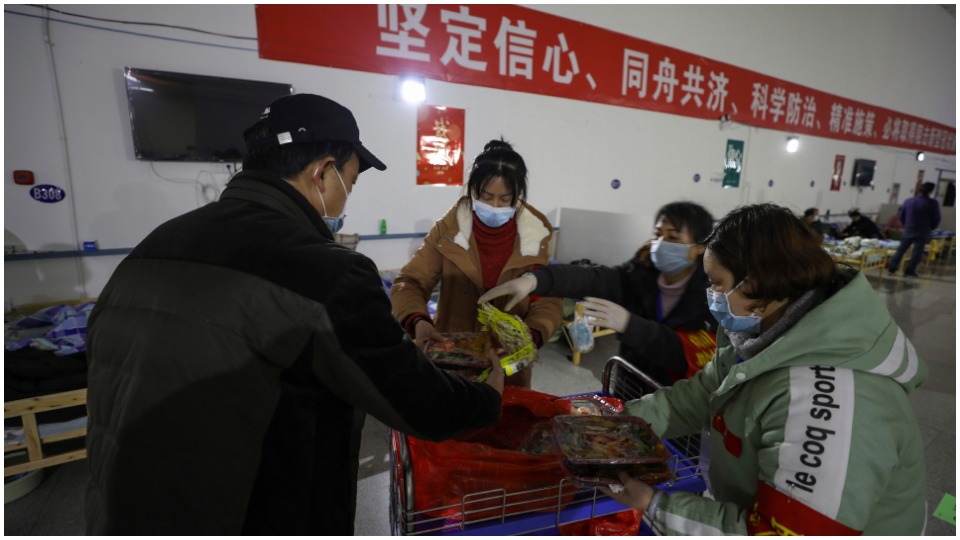
BEIJING—The world has a Public Enemy No. 1, and it’s the novel coronavirus.
Capable of causing severe pneumonia among those it infects, the virus first wreaked havoc on the city of Wuhan in China’s Hubei province and has since spread at an alarming rate. At present, thousands have died and over 100,000 have been infected in dozens of countries, leading the World Health Organization to declare an official pandemic.
As the number of infected continues to rise, broader questions are being asked of governance systems all over the world. One can examine the responses of two countries, for instance, and reveal far more about these places than their philosophies on crisis management—we can dig even deeper, and learn their foundational values.
Let’s be honest, though. When it comes to surface-level analysis, there’s plenty to look at. To take one example, only a few thousand have been lab-tested for the virus in the United States, with thousands more stuck in long queues or being sent home despite exhibiting telltale symptoms. (For no particular reason, I’m reminded China can test 1.6 million people each week, according to a WHO estimate.)
Even with that morsel of information it should be clear the U.S. is not equipped to deal with a crisis of this magnitude. But the epidemic is also laying bare inadequacies and inequalities that have plagued the country for decades—the inherent shortcomings of a system that prioritizes private profit over public health. These exacerbate the spread of a potentially deadly virus in a near-infinite number of ways.
Health insurance companies have said they will cover costs for testing, but not treatment—a lackluster solution if there ever was one. Why would someone who’s sick go through a test if they know they can’t afford to get better? This doesn’t even include the millions of people in the U.S. without any insurance at all. Advice for them seems limited to “good luck.” Insurers and healthcare providers must be compelled to forego profit-seeking and give treatment to all who need it at no cost. Full, universal coverage is the only way people will feel safe going to the hospital, and that’s what it will take to eradicate the disease.
As bad as the healthcare situation is, the problems don’t end there. With no paid sick leave policy in place and Congress arguing over the bill that would provide it, millions of workers will have no choice but to go to their jobs even if they’re showing symptoms. Professions that routinely deny benefits are, in a terrible irony, often the ones that involve the most human contact. Service industry employees, with bills to pay and without the financial security to stay home, will become walking disease vectors.
The workplace isn’t the only flashpoint for this epidemic. Schools and universities, with barely a word of warning, are closing their doors. Impoverished students in the US rely on primary and secondary schools for a free meal, and of these many are classified as homeless—over 100,000 in New York City alone. Without a plan to cover this shortfall, countless children will go hungry.
College students in dormitories are not allowed to stay in their housing and must return home, but again, quite a few don’t have the means to get there. Harvard University, that venerable institution with a $38 billion endowment, has emptied its dorms and forced undergraduates on financial aid to turn to alumni and student networks to cover relocation costs. I guess it’s out of the question for some of those billions to be used to keep a roof over students’ heads.
This is only a sampling of the knock-on effects of the pandemic we’re seeing happen in real time. There are jail and prison populations that are extremely vulnerable to an outbreak, as some overburdened facilities don’t even provide soap or hand sanitizer to inmates. If utility bills go unpaid by people who are sick or who can’t go to work, widespread electricity shutdowns will lead to greater misery and death. The list goes on.
But it doesn’t have to be this way. We have an excellent example of the right approach to an epidemic of this size and scale. China reacted swiftly and decisively once the gravity of the situation became clear. Testing and treatment were made free, and new temporary hospitals were constructed in record time in epidemic hotspots. Electricity, wireless and heating services pledged not to cut customers off for non-payment. State industries redirected production toward essential goods and medical supplies. Workers who could did their jobs from home, and service employees were deployed in parallel industries like delivery to keep employment and wages up. At no point were daily necessities hard to come by—yes, even toilet paper.

The combination of mass social distancing and centralized quarantine for confirmed patients has effectively snuffed out the epidemic in the place that was hardest hit. The measures China took bought precious weeks for the rest of the world to prepare for the inevitable spread of a highly contagious virus. Tragically, quite a few countries ignored the warning and instead spent that time criticizing China for what they branded an “authoritarian” or “draconian” response. Commentators salivated at the prospect of the country’s economy collapsing instead of asking what could be learned from its experience containing the virus. But that’s to be expected. In the capitalist imagination, cutthroat competition takes priority over cooperation and solidarity.
Most upsetting about the U.S.’ slipshod handling of the outbreak is the fact those responsible won’t be the ones who suffer for it. They are wealthy and powerful. They enjoy top-flight health care and can sequester themselves at a moment’s notice with no concern for their material needs. It’s poor and working people who will bear the brunt of this crisis in lost wages and employment, in outrageous medical bills, in family and friends who don’t survive.
The pandemic is revealing the true nature of the world’s economic systems. Some have shown they value health and human life above all else. Others, it seems, find death too profitable to make any meaningful changes.
In the coming weeks, we’ll be seeing the human cost of that cruel moral calculus. Without support from institutions meant to be relied on in times of crisis, the people of the U.S. will have to band together and solve these problems themselves.










